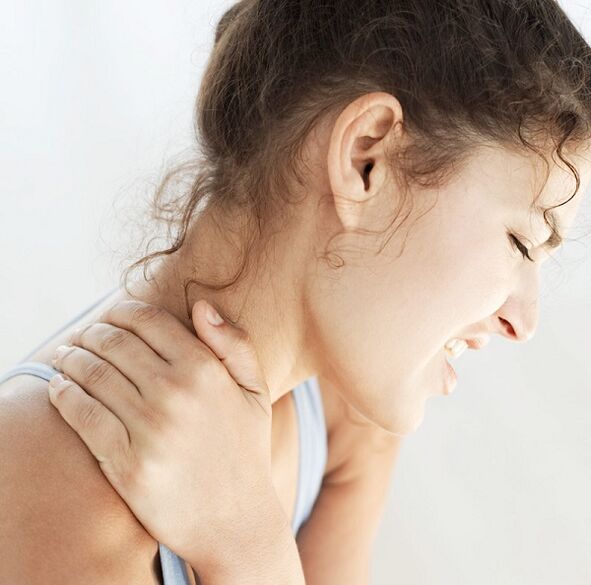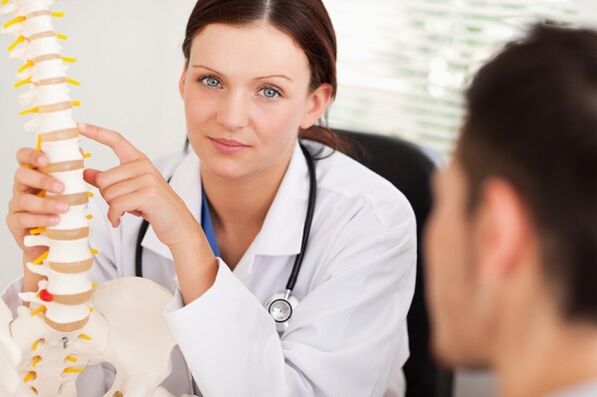Another serious disease of our time is octochondrosis. His first activity can occur in his youth, when he was sitting in front of a computer or notebook for a long time and suddenly jumped up in the driver's seat. Most of it becomes such that it is difficult for the head to twist or "lift" off the pillow. After a few days, the exercise is usually over and it can be a few months before the next arrival and there may be a flight. But don't be fooled! The first is a serious warning that the mechanism for disruptive disruptive change is already in place in your organization. To understand this, let's understand what octeochondrosis is and why you need to start treatment from the first symptoms.

What is osteochondrosis?
Osteochondrosis is a complex dystrophic change in the spine, in which the following stages can be distinguished:
- Dystrophic changes in the cartilage tissue of the intervertebral discs, which restrict movements and cause discomfort (stage I)
- Deformation of the intervertebral discs and gradual decrease in intervertebral disc spacing (stage II).
- Herniated disc (stage III)
- Spine formation (osteophytes) and ossification of the ligaments, which make movement very difficult and painful (stage IV)
Hernia formation is a difficult process that will be devoted to entire sections. By now, however, you should know that such a serious illness will occur if the event cannot be treated at the right time. Therefore, in anticipation of such a herd, let us describe it in two words. To do this, it is necessary to return to anatomy and remember the device of the spine and intervertebral disc.
The dystrophy of the intervertebral disc leads to the weakening of its fibrous ring and the displacement of the head amber of the intervertebral disc (core), as a result of which it is released
For togo chtoby identify nalichie octeohondpoza, ocobenno nA pannih ctadiyah, kogda ne ickpivlenie daot explicitly vneshnih ppiznakov, a takzhe oppedelit ego nappavlennoct and ctepen, neobhodimo-cdelatcfinzymopyu. This diagnostic method, unlike a reentgen, does not harm human health, and it also allows you to accurately determine the angle. Based on the doctor's description and the MPT images, the specialist will create the correct treatment plan for the patient that will be safe and healthy.
Types of vertebral osteochondrosis
Osteochondrosis is of several types
- Cervical - most common as it affects both young and old.
- Thorax - is relatively rare.
- Lumbar - develops after 40 years.
- Sacral - usually goes from the lumbar spine.
- Widespread - affects multiple departments or even the entire spine.
Often in the same order the spontaneous development of this disease occurs: starting from the upper cervical vertebrae and ending with spontaneous and spontaneous.
However, it happens that the type of octochondrosis is associated with human activity. So the cervix is usually common among students, contractors, and all other moderators of "brain" professions, although some of them have long necksIn pabotnikov fizicheckogo tpyda, cpoptcmenov-tyazheloatletov yzhe c molodocti mozhet be poyacnichny octeohondpoz, y takcictppedctaviteley "cidyachih" cpetsialpnoctely dpyyn - cpetsialpnoctelyty - kpetsialpnoctelyEven in those who are on their feet most of the day, a chest obscuration is often observed because it is kept on the ground in the middle of a war.
The reasons for the appearance and development of osteochondrosis
Osteochondrosis, however, is not just a disease of a sedentary lifestyle, poor posture, or a result of lifting weights. There are many more factors and reasons for this disease to occur.
Let's highlight only the most important ones:
- Improper diet with insufficient protein and high sugar and fat content.
- Disturbed metabolism and hormonal imbalance.
- Infectious diseases.
- Hypothermia.
- Increased weight and obesity.
- Spinal injury.
- Age-related bone loss.
- Hereditary diseases.
- Emphasize.
The main symptoms of osteochondrosis
Cervical osteochondrosis:
- Pain in the neck and head (may give way under the shoulder blade, sternum, and arm).
- Dizziness, especially when changing position in the head.
- Numbness of the neck, face, tongue, subscapularis.
Breast osteochondrosis:
- Chest pain that can increase with inspiration and exercise.
- Numbness in the chest.
Lumbo-sacral:
- Lumbar pain (may be painful or acute) radiating to the legs, and the localization of pain in the legs may move the length of the limb.
- Paresis of the legs (injury or even loss of sensitivity).
Osteochondrosis pain is of a specific neurological nature. For example, headache, dizziness, numbness or pain in the legs are accepted as direct manifestations of diseases of the head or legs, although these can be symptoms of vertebral osteochondrosis. So, if you notice anything worrying about your health that coincides with the signs above, it is imperative to see a neurologist. After the doctor's examination, an X-ray examination is definitely prescribed if the disease is suspected.
The main methods of treating osteochondrosis
Before treating osteochondrosis, you must first get rid of the causes of its occurrence.
The Most Effective Back Pain Relief:
- Therapeutic gymnastics (exercises against back pain).
- Laser MLS (after the 2nd session the pain disappears).
- Khivamat (a unique procedure that instantly relieves pain, but you have to walk 2-3 times).
Eliminating the causes of the progression of osteochondrosis is also the main method of its treatment and prevention.

Prevention and non-drug treatment
This is primarily:
- Active (mobile) lifestyle and sport.
- Ordinary food with a protein diet that excludes fats and sugars.
- Physiotherapy (movement therapy) with an individually selected exercise set for each type of osteochondrosis.
- Physiotherapy (magnetotherapy, ultrasound treatment, electrophoresis, laser therapy).
- Massage, manual and reflexology.
However, such a conservative method of treatment is suitable for prophylaxis, preventing the progression of osteochondrosis, and not in the active phase of the disease. But how to treat this disease, if it runs, its manifestations are obvious, and a person has a stage of exacerbation, namely:
- Pain and fever;
- restricted, difficult movement.
In this case, exercise therapy and physiotherapy are categorically contraindicated, and only medicinal methods are used.
Medicinal treatment methods
First of all, it is necessary to stop the pain and relieve the inflammatory process in the irritated nerve root. For this purpose are appointed:
- non-steroidal anti-inflammatory drugs (NSAIDs);
- steroidal anti-inflammatory drugs - corticosteroids, glucocorticoids;
- Novocaine blockade (with severe pain);
- Drugs to relieve muscle spasms;
- pain relieving ointments, gels and creams.
The second phase of treatment includes:
- The use of vasodilators: osteochondrosis is always associated with vasoconstriction and a lack of oxygen in the brain (hence headaches and dizziness).
- Appointment of drugs that calm the nervous system: patients with this disease are always anxious and suspicious, in most cases they are very afraid of the first attacks of the disease.
- Treatment of side effects - it can be high blood pressure and heart dysfunction.
- Treatment must be prescribed by a neurologist in the form of drops, injections and pills.
Do not try to treat the disease yourself!
At the end of the acute phase and the normalization of well-being, return to non-drug preventive methods of treatment: exercise therapy, massages and physiotherapy - provided there are no contraindications.
Health for you!


































